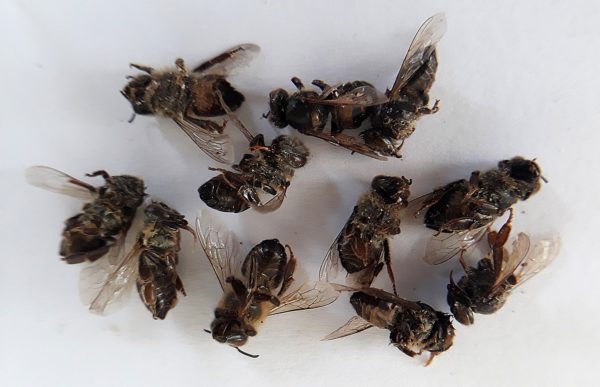Bees have been dying in their thousands along the Cape peninsula. Commercial bee farmers experienced a huge number of honeybees dropping dead right outside their hives over the past week.
It is believed the deaths could be due to accidental poisoning caused by agricultural farming.
Beekeepers in the Constantia area believe farmers are spraying their crops with pesticides that contain a mixture of molasses and ant poison. The sweet taste of the concoction attracts the bees, who then become contaminated and carry the poison back to their hives.
Vice-chairman of the Western Cape Bee Industry Association and commercial bee farmer, Brendan Ashley-Cooper, told IOL he has lost 100 hives. A sample has been sent for testing in Cape Town’s Hearshaw and Kinnes Analytical Laboratory.
“Until we have the lab results we won’t know what the actual cause of the deaths are. But it seems that all things point to accidental poisoning. The largest number of bee deaths we have are from agriculture where farmers are misinformed by suppliers about the effects of the pesticides,” said Ashley-Cooper.

This added strain on the Western Cape’s honeybee numbers could not have come at a worse time, as populations are already struggling due to the after effects of drought and fire. Availability of nectar and foraging sites is currently low, while diseases and pests are rampant. Much research and action is needed to mitigate these various threats and the South African National Biodiversity Institute (SANBI) is undertaking a project researching the honeybees’ forage resource requirements.
Although Cape honeybees are not officially under threat, they are a crucial part of the ecosystem and important pollinators of flowering plants, including many Fynbos species. Honeybees are used to pollinate about 50 crops across South Africa, including deciduous fruit and vegetables that grow in the Cape region.
A few interesting facts about bees:
1. A honeybee can fly 24km in an hour at a speed of 15mph. Its wings beat 200 times per second or 12,000 beats per minute.
2. A beehive in summer can house as many as 50 000 to 80 000 bees.
3. A single bee would need to collect nectar from about two million flowers to make one pound of honey. Collecting this quantity requires the labour of 556 worker bees, who have to fly more than once around the world to gather it.
4. The average worker bee makes about 1/12th of a teaspoon of honey in its lifetime.
5. Every 3rd mouthful of food has been produced thanks to bees pollinating crops. Flowering plants rely on bees for pollination so that they can produce fruit and seeds. Without bees, there would be no fruits or vegetables to eat.
6. A single beehive can make more than 100 pounds (45 kg) of extra honey. The beekeeper only harvests the extra honey.
Picture: Pexels

